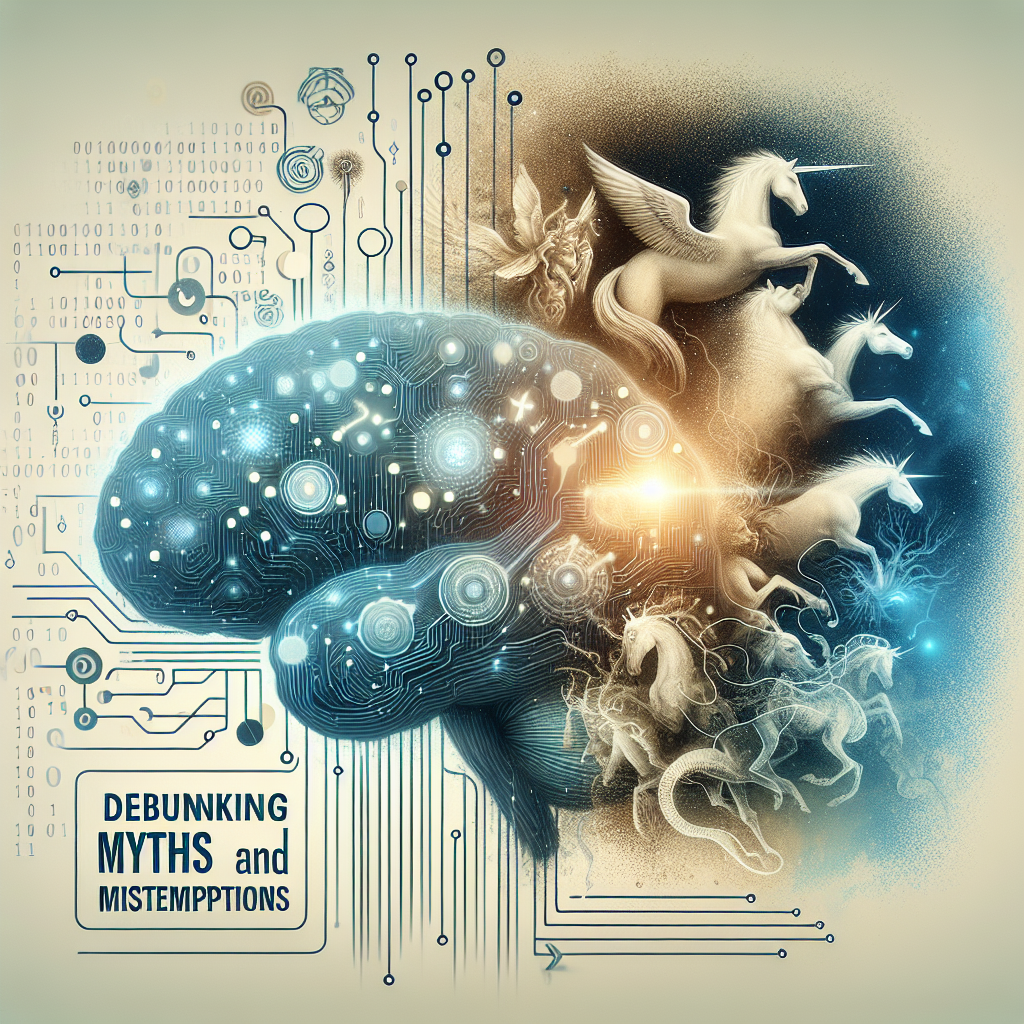Debunking Myths and Misconceptions About Artificial General Intelligence
Artificial General Intelligence (AGI) is a fascinating and rapidly evolving field of technology that holds immense promise for the future. However, like any cutting-edge technology, AGI is often shrouded in myths and misconceptions that can hinder public understanding and acceptance. In this article, we will debunk some of the most common myths and misconceptions about AGI, and shed light on the reality of this groundbreaking technology.
Myth #1: AGI will surpass human intelligence and take over the world
One of the most pervasive myths about AGI is that it will surpass human intelligence and pose a threat to humanity. This fear is often fueled by popular culture depictions of superintelligent machines that turn against their creators. However, the reality is that AGI is still in its infancy, and researchers are far from achieving human-level intelligence in machines.
While AGI has the potential to greatly enhance human capabilities and revolutionize industries, the idea of machines surpassing human intelligence and taking over the world is purely speculative and unfounded. In fact, most experts agree that AGI will likely be developed in a way that aligns with human values and goals, making it a powerful tool for positive change rather than a threat to humanity.
Myth #2: AGI will replace human workers and lead to mass unemployment
Another common misconception about AGI is that it will lead to mass unemployment as machines take over jobs traditionally performed by humans. While it is true that automation and AI technologies are already reshaping the workforce, the idea that AGI will completely replace human workers is exaggerated.
In reality, AGI is more likely to augment human capabilities and create new job opportunities rather than eliminate them. By automating repetitive tasks and freeing up human workers to focus on more creative and complex tasks, AGI has the potential to boost productivity and drive innovation in a wide range of industries.
Myth #3: AGI will solve all of humanity’s problems
Some people believe that AGI will be the ultimate solution to all of humanity’s problems, from curing diseases to solving climate change. While AGI certainly has the potential to address many of the world’s most pressing challenges, it is not a magical panacea that can solve all problems with a wave of the hand.
The reality is that AGI is a tool that must be used responsibly and ethically to achieve positive outcomes. It is up to humans to define the goals and values that AGI should embody, and to ensure that it is developed and deployed in a way that benefits society as a whole.
Myth #4: AGI is just science fiction
Some people dismiss AGI as nothing more than science fiction, believing that the idea of creating machines with human-level intelligence is too far-fetched to be taken seriously. However, the reality is that AGI is a rapidly advancing field of research with real-world applications and implications.
Researchers around the world are making significant progress in developing AGI technologies that have the potential to revolutionize industries such as healthcare, finance, and transportation. While AGI may not yet be as advanced as the AI systems depicted in movies and TV shows, it is a very real and tangible technology that is already changing the world in profound ways.
FAQs
Q: What is the difference between AGI and narrow AI?
A: AGI refers to machines that possess human-level intelligence and are capable of performing a wide range of tasks, while narrow AI refers to machines that are designed to perform specific tasks or functions. While narrow AI systems excel at tasks such as image recognition or natural language processing, they lack the general intelligence and versatility of AGI.
Q: How far away are we from achieving AGI?
A: While it is difficult to predict exactly when AGI will be achieved, most experts agree that we are still many years away from developing machines with human-level intelligence. Despite rapid advancements in AI technologies, there are still many technical and ethical challenges that must be overcome before AGI becomes a reality.
Q: What are some of the ethical considerations surrounding AGI?
A: As AGI technologies become more advanced, there are growing concerns about the ethical implications of creating machines with human-level intelligence. Some of the key ethical considerations include issues of privacy, bias, accountability, and the potential impact on the workforce. It is important for researchers, policymakers, and industry stakeholders to address these ethical concerns proactively to ensure that AGI is developed and deployed in a responsible and beneficial manner.
In conclusion, Artificial General Intelligence is a groundbreaking technology with the potential to revolutionize the world in profound ways. By debunking myths and misconceptions about AGI, we can foster a better understanding of this transformative technology and its potential benefits and challenges. It is crucial for society to engage in informed discussions and debates about AGI to ensure that it is developed and used in a way that aligns with human values and goals.

